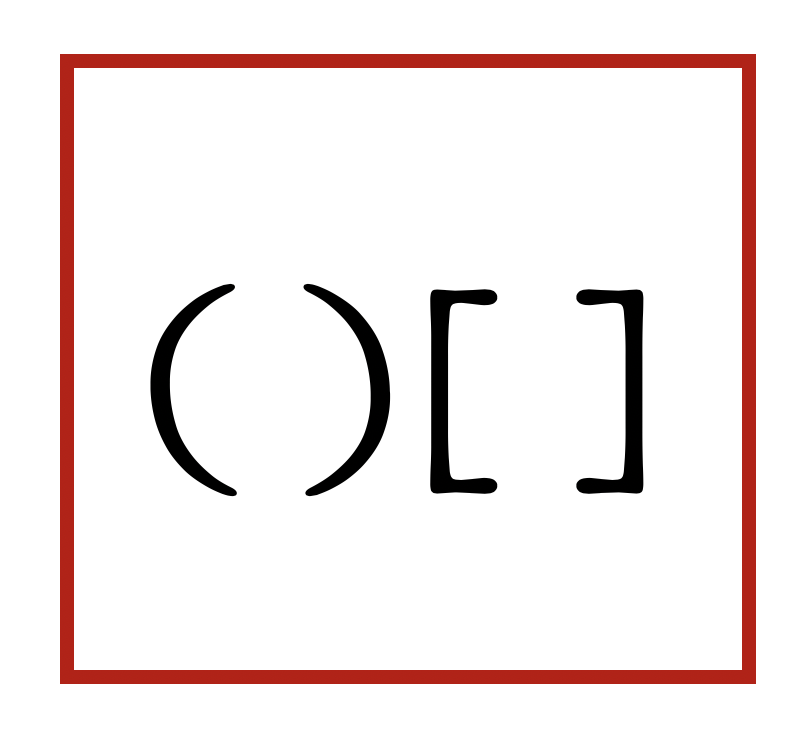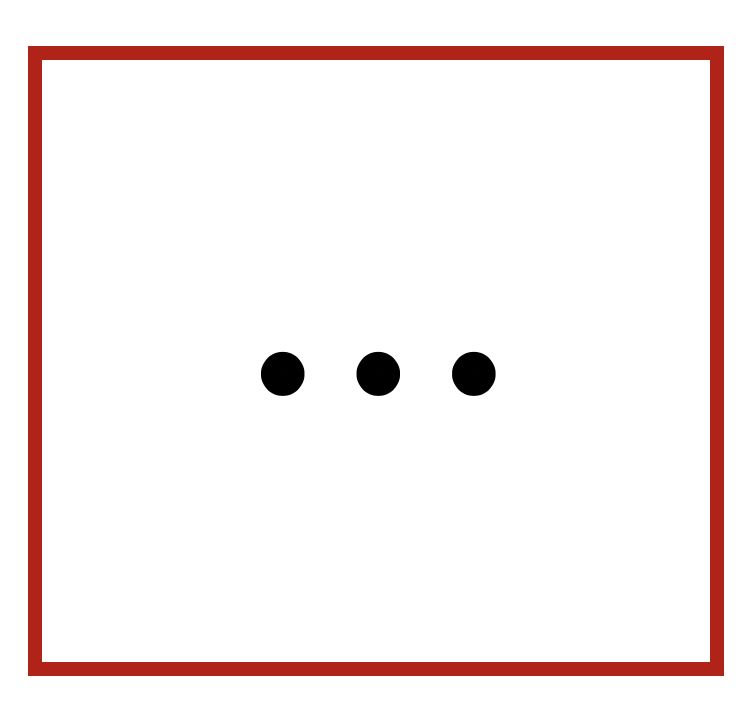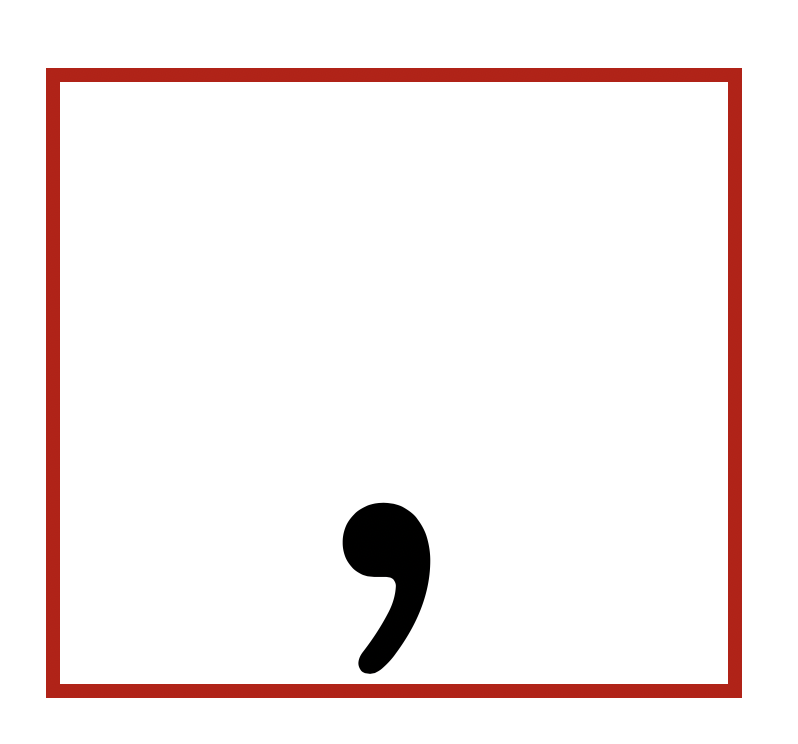The Upstart Punctuation Guide
Can’t remember what an Oxford comma is? Not sure whether to use single or double quotes? Don’t know the difference between brackets and parentheses, or what is a semi-colon for?
The following guide to basic punctuation contains the answers to these questions and more. It also explains usage for upstart style.
Click the following links to jump to the section:
Ellipses (…)
Apostrophes
Despite fairly consistent rules for use, apostrophes are a common source of errors in student writing. Apostrophes serve two main functions: to indicate ownership or tell us something has been abbreviated or contracted.
Indicating ownership
Use an apostrophe to indicate ownership by adding an apostrophe followed by an s to singular nouns.
e.g. a hen’s beak, the book’s contents, Susan’s point is clear.
For plural nouns, the apostrophe follows the s.
e.g. five hens’ beaks, the girls’ books.
In the case of words that are already plural, like children and sheep, the apostrophe goes before the s, same as it does in the singular form.
e.g. the children’s book, the sheep’s paddocks
Abbreviations and contractions
Use an apostrophe to indicate where a word has been shortened or abbreviated.
Contractions are a form of abbreviation where two words are fused together—with letters removed—to create a shortened form
e.g. they’re (they are), didn’t (did not), let’s (let us), it’s (it is), who’s (who is).
We also use apostrophes to indicate a word is shortened. The word until is often shortened in speech.
e.g. Myers wrote the book Won’t Know ‘til I Get There.
Sometimes words are shortened so often it becomes the common form. For example, the word plane, which is an abbreviation of airplane, used to be written as ‘plane. But now the word has become so common it has entered the lexicon as its own word.
Apostrophes are also used when dates are abbreviated.
e.g. Summer of ’69
Plural words do not need an apostrophe even if they are numbers with acronyms.
e.g. fish and chips, 1960s, BMWs
Common confusions with apostrophes
The words it’s/its and who’s/whose create the most confusion for students.
The words it’s and who’s should only be used when shortening it is, who is and who has into contractions.
e.g. It’s a common question.
e.g. Sam, who’s the president, is announcing it today.
Its and whose (without apostrophes) should be used when using the possessive form.
e.g. The cat drank its milk.
e.g. I want to know whose shoes these are.

Brackets and Parentheses
Colons and semi-colons
Colons
Note: a colon looks like this : and is not to be confused with the semi-colon, which looks like this ;
Use a colon to introduce short quotes, to start off a list, or introduce an idea or explanation.
e.g. We went to the shop and bought: peas, beans and carrots.
When introducing the start of a quote, you use capitals after it. If starting off a list, or introducing an explanation or an idea, you do not.
e.g. She said: “We will decide next week.”
e.g. We need to: form a committee, start planning, consult with experts.
Semi-colons
Note: a semi-colon looks like this ; and should not be confused with the colon, which looks like this :
Semi-colons are described as stronger than a comma but weaker than a full stop. They are most commonly used to link independent clauses that are related in thought.
e.g. Some people write with a word processor; others write with a pen or pencil.
Both sides of the semi-colon must be able to stand alone as complete sentences. Don’t use with a dependent clause or a coordinating conjunction (and, but, or). Journalism students are advised to avoid using semi-colons where two short sentences would be more appropriate.
Commas
Students tend to use commas more than necessary rather than not enough. Here are some general rules for when a comma is necessary.
Listing things
When writing a list, a comma substitutes the and.
e.g. She broke records in 2007, 2008, 2010 and 2011.
e.g. I cleaned the house, went to the gym, built a chair and then cooked dinner.
Oxford commas
In upstart we do not use the Oxford comma in lists. The Oxford comma is placed before the final item in a list of more than three things. and is used by some publications.
In the following examples the Oxford comma is placed before the and.
e.g. Oxford comma: The committee comprised of: two students, two teachers, the principal, and the school administration assistant.
e.g. No Oxford comma: The committee comprised of: two students, two teachers, the principal and the school administration assistant.
Commas and clauses
A clause is a building block of the sentence structure. They are often joined by a comma.
Joining independent clauses: Some clauses are described as independent, meaning they could stand on their own as a sentence and make complete sense. However, sometimes two independent clauses are linked by a comma to establish a relationship (often linked by and or but).
e.g. “She appealed to the court, but did not get a response.” v “She appealed to the court. She did not get a response.”
Joining dependent clauses: Then there are dependant clauses. These do not make sense on their own.
e.g. Although he started out as a dancer.
e.g. Which was very difficult for me.
Both the above read like incomplete thoughts. A dependant clause needs to be attached to another clause to help it make sense. When this is done, the clauses are joined by a comma to indicate their relationship.
e.g. Although he started out as a dancer, he quickly became more interested in cheerleading.
e.g. I had to decide whether or not I wanted to stay in Australia, which was very difficult for me.
Commas as parentheses: This is where commas are used to separate out a supplementary clause inside a sentence.
e.g. Merna, who has worked there for many years, showed me the ropes.
In the case above, the comma can be thought of as performing a similar task to parentheses. Instead, a comma is placed before and after a clause that is related to the sentence, but somehow less important or supplementary. In the above example, the main idea of the sentence is that someone called Merna showed the speaker or writer the ropes. The information that she has worked there for many years is supplementary information so it is surrounded by commas to separate it from the main idea. You can identify these supplementary clauses by asking yourself if the sentence would still make sense if it was removed.
With these clauses, both parentheses and commas could be used. Both the examples below are correct. However, it is best not to overload your writing with distracting parentheses, where a comma could perform the same function.
e.g. The meeting (which will take place on Friday) will decide the outcome
e.g. The meeting, which will take place on Friday, will decide the outcome.
Other comma uses
Around identifying nouns: You will often see commas placed around names or identifying nouns.
e.g. The actor’s husband, Andrew Upton, will accompany her to the set in Lagos.
Be careful to use these properly. In the preceding example, setting commas around the name implies that Upton is the actor’s only husband. In the following example, however, without any commas, the implication is that he is one of more husbands.
e.g. The actor’s husband Andrew Upton will accompany her to the set in Lagos.
In quoting: The comma is used at the end of a complete quote when a speech tag is going to be added.
e.g. “I don’t know why,” he said. “We will know more when the report comes out.”
Introductory words: Some introductory words such as yes, however, well and so at the start of sentences are set off by a comma. It indicates a kind of pause to the reader.
e.g. However, the results were contradictory.
e.g. So, what will you do now?
e.g. Well, that was a mess.

Ellipses
An ellipses is a series of dots in a row. They can be used in more than one way. The most common is to show a trailing of of a thought or speech. However, in journalism and academic writing, we use them a lot to show where words have been removed from quoted material.
Trailing off
To indicate that someone trailed off in speech. In this case it is indicated by three dots with no spaces between the words preceding or following it.
e.g. “I found it really difficult, but I…”
e.g. “I felt so…I don’t know…guilty?”
Omission
In journalism an ellipsis is also used in quotes to show where words have been omitted. The ellipses signals to the reader something has been removed. In this case, a space is left one either side of the ellipses.
e.g. “Today, after careful deliberations, we vetoed the bill.” becomes “Today … we vetoed the bill”.
Capitalise the word after the dots if it is part of a new sentence.
e.g. “I wanted us to do our best on this night, the night of the competition. Some members of the team performed well, but others didn’t.” becomes
e.g. “I wanted us to do our best… Some members of the team performed well, but others didn’t.”
.
Hyphens
Hyphens are sometimes necessary to join two words together to create either a new meaning, or to avoid confusion of meaning. Some compound words (nouns that are actually made up of two words) are also joined by hyphens.
The use of hyphens can sometimes be part of a concrete grammar rule and sometimes a matter of style choice, which can make it confusing. It is best to consult with an Australian Dictionary if you are unsure of particular instances.
The following examples are some useful, concrete rules for when to use hyphens.
Compound numbers
When two numbers joined together to make one, they are hyphenated.
e.g. Twenty-two, fifty-six.
Expressing age
When age is functioning as an adjective it should be hyphenated.
e.g. The 12-year-old boy was found yesterday. He is a 12-year-old.
But NOT when age is taking a plural form.
e.g. She is 12 years old. The building is 50 years old.
Adjective + adjective
In the case where two adjectives depend on each other to describe a noun, they are often hyphenated to avoid confusion.
For example, consider the difference between the following examples with or without a hyphen. The first is to be read as two separate adjectives, both describing the same noun. In the second, they are working together to make meaning to describe that noun.
e.g. An adult free party is party for adults with no cost involved.
e.g. An adult-free party is a party with no adults.
In the above case, the hyphen tells us that adult and free are modifying each other. Here is a similar case where the hyphen is needed to avoid confusion.
e.g. extra marital sex. This means extra sex during marriage.
e.g. extra-marital sex. This means sex that takes place outside of the marriage.
Adverbs + adjective
When an adverb is modifying an adjective, they sometimes take hyphens. However, when using the adverbs very and adverbs ending in ly, they do not usually take a hyphen.
e.g. the very fit athlete, the highly capable student, the finely tuned piano.
However, when using well to modify an adjective, it often does. If unsure, consult with an Australian Dictionary.
e.g. the well-adjusted child, the well-versed student.
Nouns + prepositions
Words that are formed from joining nouns and prepositions require a hyphen.
e.g. The break-up finally happened after a long build-up.
However, you do not use it when you are expressing a verb action.
e.g. The tensions started to build up over a year ago, and we wondered if they’d break up or not.
Prefixes
These will either be hyphenated, or set solid (made into one word). The preference is set solid where possible, but usage can vary. Consult an Australian dictionary if unsure.
e.g. over-estimate, semi-trailer, anti-intellectual
e.g. extraordinary, deactivate
Hyphens and compound nouns
Compound nouns are formed when two nouns work together (and depend on each other) to create a new noun. For example, water and bottle are joined to create water bottle. How compound nouns are written comes in three forms, with (unfortunately) no real rules governing the use. If you are unsure, consult an Australian Dictionary. Be consistent with use.
As two words in a row:
e.g. She got as far as the bus stop when she realised she’d forgotten her water bottle.
As two words fused together:
e.g. His lunchbox was filled with food.
As two hyphenated words:
e.g. Her mother-in-law had a great-granddaughter who was a plumber.
Note: In some cases, there is more than one acceptable variation. If you are not sure how to write them, you are best to look up compound nouns in an Australian dictionary.
Other hyphen uses
Hyphens are often used when the last word of the prefix is the same as the first letter of the word to avoid difficulty in reading or pronouncing.
e.g. Anti-intellectual (instead of antiintellectual).
Use a hyphen where adding a pre-fix might create a word that is identical with an existing word and might create confusion.
e.g. ‘re-cover’ to mean to cover something again, so it cannot be confused with ‘recover’ as in to get better.
Part and semi are usually hyphenated.
e.g. They will play in the semi-finals on Friday if they win.
e.g. He has a part-time job.
Fractions are hyphenated.
e.g. Three-quarters of the bowl should be filled. Then add two-thirds of a cup of flour.
e.g. The players stay on the field to rest at quarter-time, but go to the change rooms for half-time.

Quotation Marks
Quotation marks indicate that you are writing something that has been said or written by another entity. For ethical and legal reasons you must ensure everything that is placed between quote marks is exactly what was originally said or written. If the quote is unclear or long, it is best to paraphrase it into an indirect quote where you can ensure the language is clear.
The following are some rules for writing quotes in upstart style.
Double and single quote marks:
Double quotes are used to quote writing or speech.
e.g. “The report is both damning and enlightening,” Turnbull said.
Single quotes are used only for quotes inside quotes.
e.g. “When I spoke to the minister on Thursday, he said it was ‘foolish and irresponsible’ for the students to do that,” Nguyen said.
Punctuation quotes
For full quotes the punctuation goes inside the quotation marks, and for partial quotes it is placed outside.
e.g. “It was a long and arduous journey,” she said.
e.g. She said the conditions in the race were “sweltering”.
e.g. He said it the decision was “very controversial”, but would not comment further.
For more on quoting and attribution style, see the section on quoting on the ‘Writing in upstart style’ page
Photo: By Miles Burke available HERE and used under a creative Commons license. The image has not been modified.





